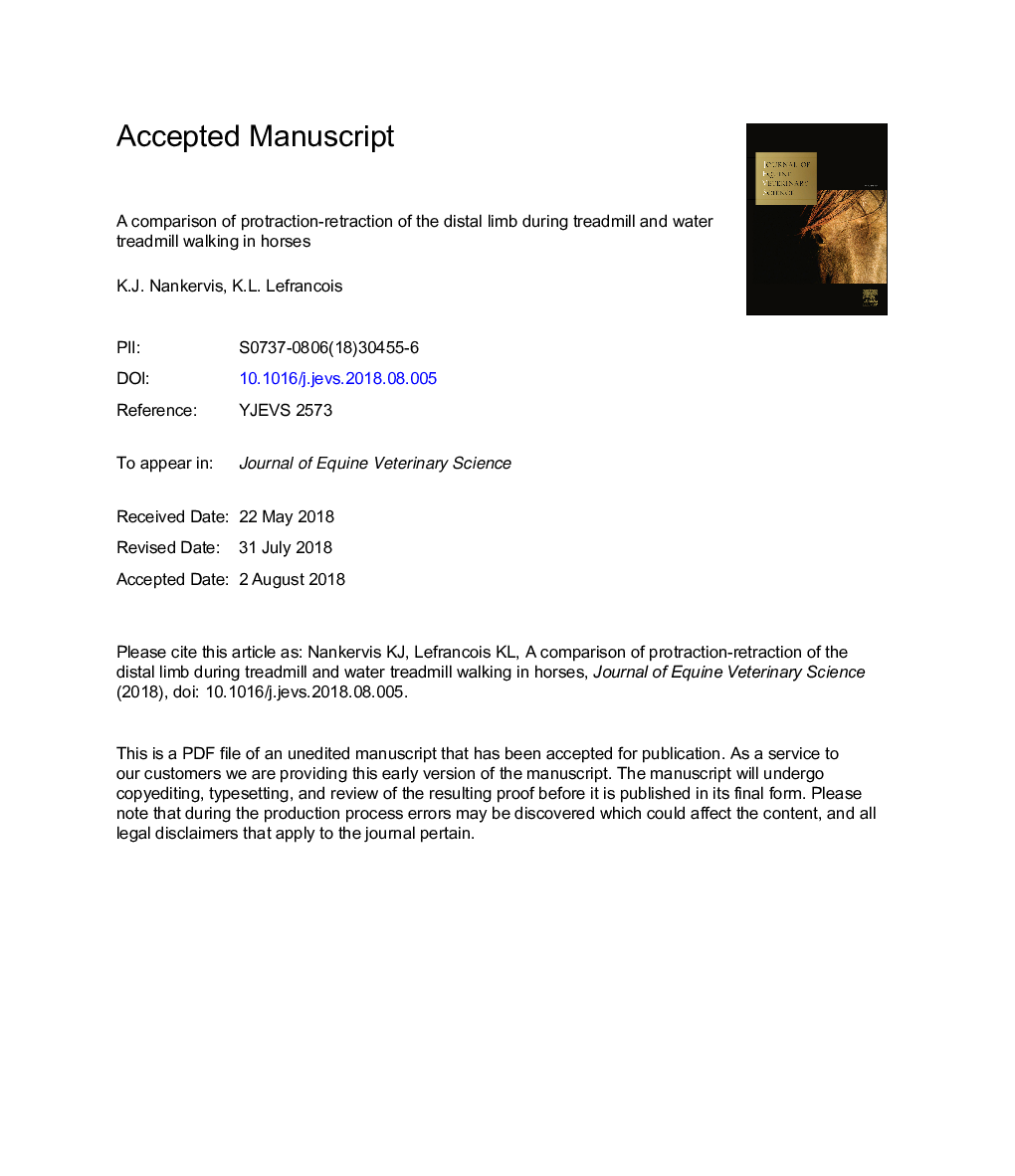| کد مقاله | کد نشریه | سال انتشار | مقاله انگلیسی | نسخه تمام متن |
|---|---|---|---|---|
| 10137238 | 1645730 | 2018 | 19 صفحه PDF | دانلود رایگان |
عنوان انگلیسی مقاله ISI
A Comparison of Protraction-Retraction of the Distal Limb During Treadmill and Water Treadmill Walking in Horses
ترجمه فارسی عنوان
مقایسه کشش-عقب نشینی از دیستال در طول تردمیل و تردمیل آب در اسب ها
دانلود مقاله + سفارش ترجمه
دانلود مقاله ISI انگلیسی
رایگان برای ایرانیان
موضوعات مرتبط
علوم زیستی و بیوفناوری
علوم کشاورزی و بیولوژیک
علوم دامی و جانورشناسی
چکیده انگلیسی
The amount of protraction-retraction of the limbs during water treadmill (WT) walking has implications for postural and muscular development of horses undertaking this exercise for training and rehabilitation purposes. The objective of this study was to compare protraction-retraction of both forelimbs (FLs) and hind limbs (HLs) during dry treadmill (DT) and WT exercise at the typical walking speed of each as used in practice. Inertial motion sensors attached to the metacarpal/metatarsal bones were used to compare maximal protraction (PROMAX), retraction (RETMAX), and total protraction-retraction range of movement (ROM) across five walking conditions: DT at 1.6Â m/s; and WT at 0.8Â m/s at four water depths, hoof depth (WTHOOF), fetlock depth (WTFET), hock depth (WTHOCK), and stifle depth (WTSTIFLE). Forelimb ROM was lowest at WTSTIFLE and significantly lower than DT (P < .001). Hind limb ROM was highest at WTSTIFLE and significantly greater than DT (P < .001). Forelimb PROMAX was significantly lower at WTHOCK (PÂ = .001) and WTSTIFLE (P < .001) than DT. Hind limb RETMAX was higher at WTHOCK (PÂ = .001) than on DT and was significantly greater at WTSTIFLE and WTHOCK than WTFET (P < .001 and PÂ = .001, respectively). Walking slowly (0.8Â m/s) on a WT reduces FL protraction-retraction ROM and increases HL protraction-retraction ROM when compared with walking at normal speed (1.6Â m/s) on a DT. The potential for FL protraction to be decreased and HL retraction to be increased should be taken into account when designing training and rehabilitation programs using this exercise modality.
ناشر
Database: Elsevier - ScienceDirect (ساینس دایرکت)
Journal: Journal of Equine Veterinary Science - Volume 70, November 2018, Pages 57-62
Journal: Journal of Equine Veterinary Science - Volume 70, November 2018, Pages 57-62
نویسندگان
Kathryn J. Nankervis, Kathryn Lefrancois,
